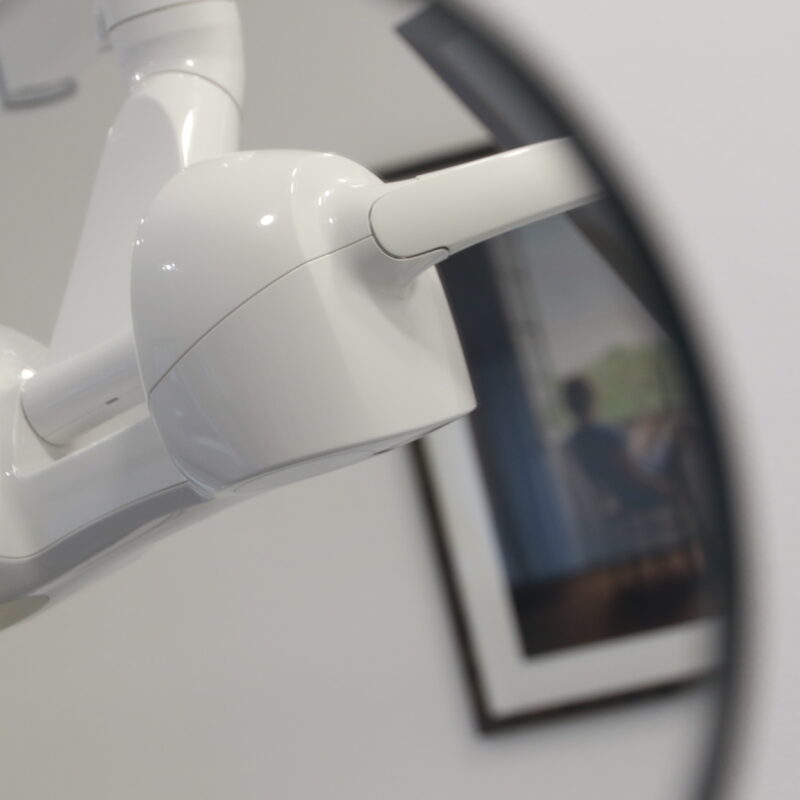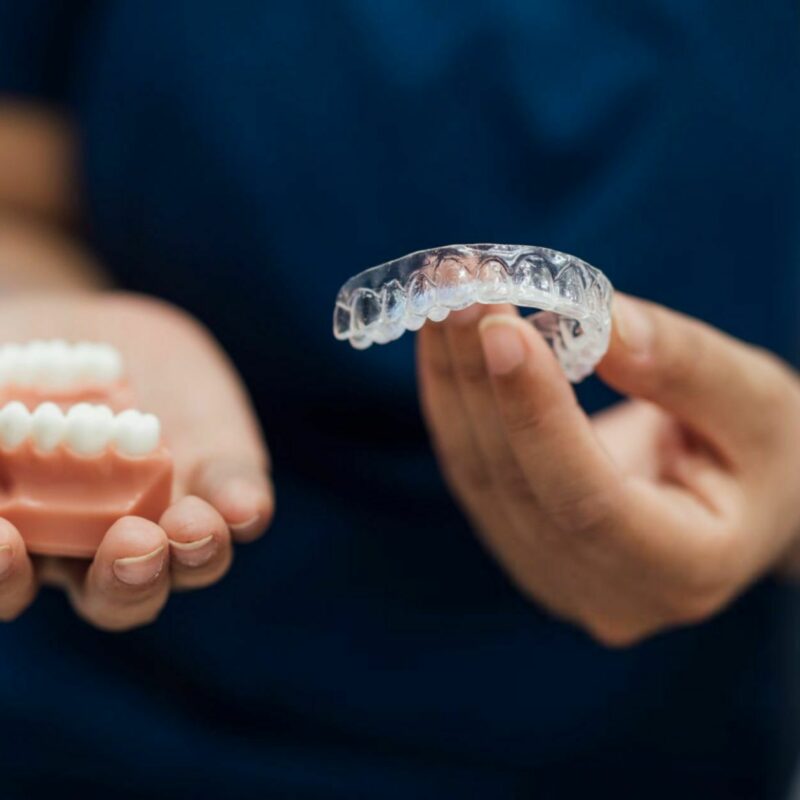
Early stage tooth decay or white spots on your teeth can stand out, and affect the appearance of your teeth and smile. Traditionally aesthetically compromised teeth were covered using filing material (bonding or composite veneers), or ceramic (porcelain or ceramic veneers).
ICON is an alternative treatment for white spots. It is very effective, efficient and conservative, with no drilling of the teeth required.
Not many people know about ICON. This article is designed to give you an overview of what, how, when and why!
What is ICON dental treatment?
Caries infiltration concept, known as ICON, is a breakthrough dental treatment specifically designed to address early-stage tooth decay and white spot lesions.
Unlike traditional methods that involve drilling and filling, or the addition of filling material (such as bonding), ICON is non-invasive, requires no drilling and offers excellent results with minimal discomfort.
In a simple process, various treatments are applied to the tooth surface, removing white spots, with no detriment to the health of the tooth.
What are white spots, and how do they form?
White spots are areas of a tooth that are made either during the formation of a tooth or after the tooth has erupted. The spot may be quite opaque white, or wispy, and cover small or large areas of a tooth. Often there is variation of the spots both within a tooth and between teeth.
Some white spots can add subtle character to teeth and can look appealing.
Dental fluorosis, caused by excessive fluoride intake during childhood, causes white spots or areas on teeth, and these spots can be accompanied by a brownish appearance to the tooth. It is therefore always important to check the local water fluoridation and use appropriate age specific toothpastes for children - your dentist should be able to advise further on this.
White spots are also caused by early decay, usually due to poor oral hygiene and diet. These white spots may also have brownish areas nearer the middle of the spot. It is more common to have these white spots on teeth where there are orthodontic attachments - such as metal brackets or tooth coloured attachments for Invisalign, and typically these appear as a ring describing the bracket or attachment they formed around. This can be quite unnatural looking, and catches the eye due to the pattern or shape of the white spots. It is therefore very important to maintain oral hygiene and a good diet during orthodontic treatment, and this includes regular (3 monthly) visits to the hygienist.
Other developmental white spots vary in appearance, and, again, can be accompanied by other colours - browns and purples. Developmental issues include enamel hypoplasia, and other mineralisation issues.
When is ICON used?
ICON is used to remove white spots on teeth, and can slightly harden weakened or damaged enamel. Initially ICON was developed to treat white spots caused by early decay around orthodontic brackets or retainers.
White spots can also be caused by dental fluorosis, enamel hypoplasia, or enamel demineralization. All have a slightly unique appearance, but the problem - a noticeable white spot is caused by a similar underlying problem within the mineralised structure of the enamel.
In many cases these spots can be quite subtle, however sometimes they can be quite noticeable and have a detrimental effect on the appearance of teeth and individuals’ confidence and self esteem.
It may also be that the superficial enamel structure is slightly weakened, and ICON can help strengthen the superficial enamel.
How Does it Work?
ICON dental treatment works by infiltrating a low-viscosity resin into the porous structure of the enamel, effectively filling and masking imperfections from within the tooth. This process not only improves the appearance of the teeth but also strengthens the surface of the enamel.
Is ICON Dental Treatment Right for Me?
ICON works very effectively to remove white spots from teeth. If you have white spots on your teeth and you're concerned about superficial tooth decay or the appearance of these white spots, ICON could be the best option for you.
It's suitable for patients aged 18 and above. If you prefer a non invasive treatment, then ICON is probably the treatment of choice.
To determine if ICON dental treatment is right for you, you should schedule a consultation with a qualified dental professional who can assess your needs and recommend the most suitable course of action.
What is Involved?
Here's a step-by-step breakdown of what to expect during your ICON dental treatment journey:
Assessment: Your dental professional will examine your teeth, discuss your treatment goals, and assess if ICON treatment is suitable for you. This step helps identify any dental imperfections to address, and any contraindications to treatment. We often forget what we want to say when we visit the dentist or the doctor, so, ideally you should make a note of all the imperfections prior to your appointment, and that will ensure the clinician is able to fully understand your specific concerns, and can prepare in advance.
Photographs will be taken, the colour of the teeth will be assessed, and possibly x-rays will be required also.
A record of the condition of the gums and any tooth wear will be noted. The clinician will also note the presence of any tooth decay. These factors may be quite important as they may have a bearing on whether the teeth are suitable for ICON treatment.
Teeth Whitening: Before proceeding with ICON treatment, it can be beneficial to undergo teeth whitening to enhance the overall appearance of your teeth and smile, while it will also allow the ICON treatment to be more effective.
Preparation: Assuming you are a suitable candidate for ICON, you’ll simply attend a scheduled appointment where your clinician will start the process by cleaning and drying your teeth thoroughly.
Infiltration: A special gel is then applied to the surface of the affected teeth to open up the pores in the enamel. This allows the ICON resin to penetrate deeply into the tooth structure, effectively filling in and masking the white spots.
Bonding: Once the resin has been applied, a curing light is used to harden and bond it to the enamel. This creates a seamless integration with your natural tooth structure, resulting in a smooth and uniform appearance.
Is it painful?
One of the best things about ICON treatment is that it's virtually pain-free. You might feel some minor discomfort during the procedure, but it's usually nothing more than a slight sensation from the resin material. Additionally, any discomfort is temporary and easily managed.
Local anaesthetic is not needed, however if it makes you more comfortable to have local anaesthetic, you should ask your dentist, who will, most likely, be happy to numb the teeth being treated.
Is ICON resin infiltration better than composite bonding?
ICON resin infiltration and composite bonding both offer solutions for addressing white spots on teeth, but they have distinct advantages in different situations. Here's when ICON may be a better choice than bonding:
Minimally Invasive Approach: ICON resin infiltration is renowned for its minimally invasive nature. It involves no drilling or removal of tooth structure, preserving the natural integrity of your teeth. This makes it particularly suitable for cases where preserving as much healthy tooth structure as possible is a priority, such as in young patients or cases with minimal enamel damage.
Seamless Integration: ICON resin has the ability to penetrate deeply into the enamel and effectively mask white spots, resulting in a seamless integration with the natural tooth structure. In cases where achieving a smooth and uniform appearance is crucial, such as with large or prominent white spots, ICON resin infiltration may provide superior aesthetic results compared to composite bonding.
Longevity of Results: ICON resin infiltration offers long-lasting results when combined with proper oral hygiene and regular dental care. The resin forms a durable bond with the enamel, providing a lasting solution to white spots. In contrast, composite bonding may require periodic maintenance or replacement over time, as the composite material can wear down, stain, chip, or become discolored.
Ease of Application: While both ICON resin infiltration and composite bonding are relatively straightforward procedures, ICON may be simpler and quicker to apply in certain cases. The infiltration process involves applying a special gel and resin to the teeth, followed by curing with a light, whereas composite bonding requires shaping and sculpting the composite material to achieve the desired result.
Benefits of ICON Resin Infiltration
Choosing ICON resin infiltration for your dental treatment offers numerous benefits, including:
Minimally Invasive: Unlike traditional methods that may require drilling or tooth reduction, ICON resin infiltration preserves your natural tooth structure, minimizing discomfort and preserving the integrity of your smile.
Quick and Painless: The entire treatment process can typically be completed in a single visit to your dentist's office, with no need for anesthesia or recovery time.
Aesthetic Improvement: ICON resin infiltration effectively masks white spots on teeth, restoring a more uniform and attractive appearance to your smile.
Long-lasting Results: With proper oral hygiene and regular dental care, the results of ICON resin infiltration can be long-lasting, providing you with a confident smile for years to come.
Summary
ICON resin infiltration is often preferred over composite bonding in cases where preserving natural tooth structure, achieving seamless integration, ensuring long-lasting results, and simplifying the treatment process are priorities. However, the suitability of each treatment option ultimately depends on factors such as the extent of white spots, patient preferences, and the recommendations of the dental professional. Consulting with your dentist will help determine the most appropriate treatment for your specific needs.
More
from the blog
Blog /Advice
Is High-Fluoride Toothpaste Safe?
Benefits, Risks, and How It Protects Against Tooth Decay
Read moreBlog /Advice
Nutritional Effects on Oral Surgery Outcomes
Preparing Your Body for Faster Recovery
Read moreBlog /Advice
PRF facials - Platelet-Rich Plasma
Learn how platelet-rich fibrin treatments naturally restore youthful skin
Read more





